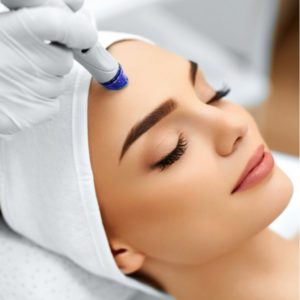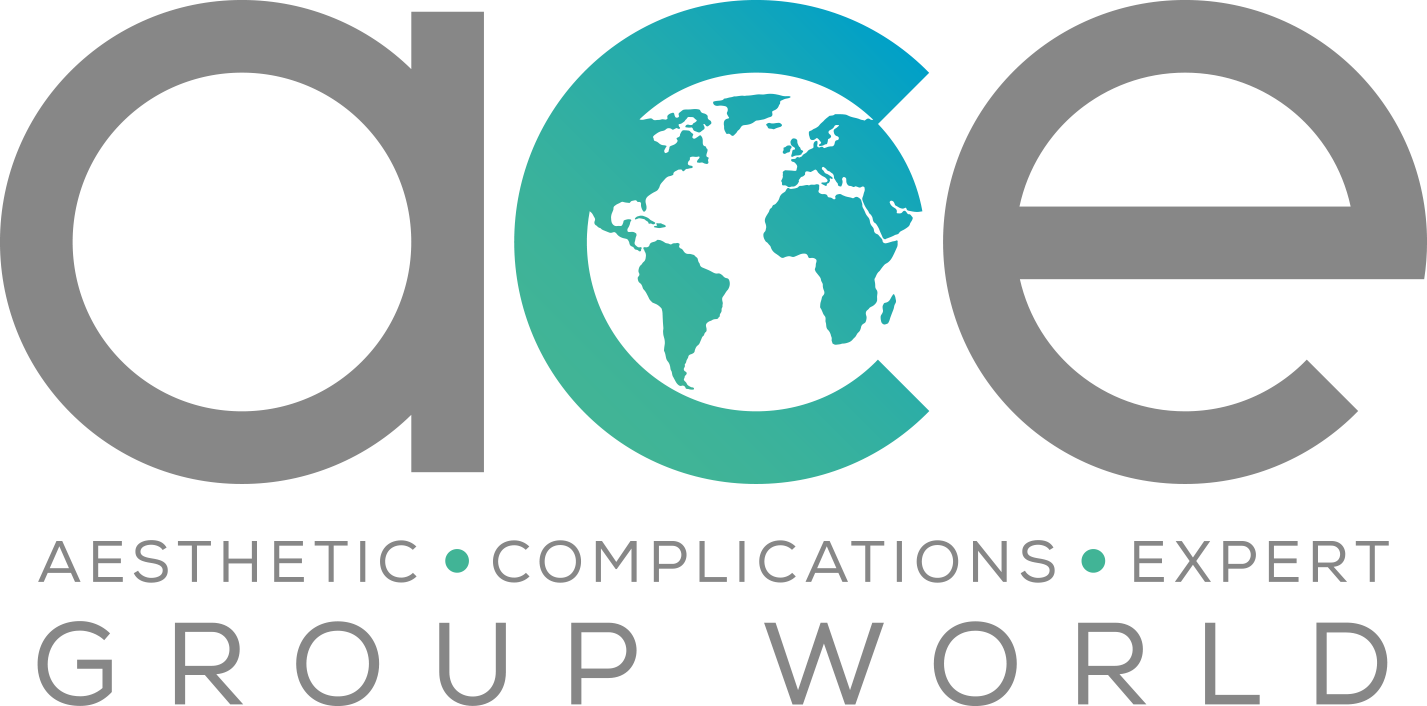Patient Information Leaflet
Microdermabrasion

Microdermabrasion
If you are planning on having a microdermabrasion treatment, we recommend that you read the following information so that you are properly prepared, can ask appropriate questions and know what to expect from your practitioner or therapist.
Microdermabrasion is an advanced exfoliating procedure which removes the dead, outer layer of skin cells and stimulates the underlying layers, which helps promote the production of new collagen and elastin.
Crystal microdermabrasion involves a device which blasts micro-crystals at high speed over the surface of the skin through a small tube. The crystals are then immediately vacuumed back up into a disposable cannister. These small crystals physically disrupt the outer layer of skin cells, causing them to be shed and vacuumed up along with the used crystals. Different machines often use different crystals which can include sodium chloride, aluminium salts, or sodium bicarbonate and some of the medical devices use crystals of a specific shape and size to obtain optimum results. Certain variables, such as vacuum power, pressure and speed may be able to be adjusted according to skin type and can affect the comfort levels during treatment.
There are also crystal-free, diamond-tip microdermabrasion machines available which use tiny diamonds on a rotating or vibrating tip to physically abrade the skin. These devices often also have a vacuum attached to remove the dead skin cells and exfoliated particles during the procedure.
Both methods can obtain similar results and during a treatment, the tip is moved over the skin in several passes. Some prefer crystal-free treatments as there are no residual crystals left on the skin or stray crystals that can enter the eye or be inhaled, but with a skilled practitioner or therapist, the risk of this is minimal. As a simple analogy, crystal microdermabrasion is like sandblasting the skin and diamond-tip microdermabrasion akin to using sandpaper on the skin.
During your consultation, ask which microdermabrasion device will be used.
Microdermabrasion was first discovered in the USA and quickly became popular due to being a non-invasive, painless, and safe procedure which quickly and subtly improves the appearance and texture of the skin. Microdermabrasion often features in the top 5 most popular non-surgical treatments in the UK.
Microdermabrasion is most frequently performed on the face, but it can be used almost anywhere. As well as the face, the neck, décolletage, and hands are also popular treatment areas.
Microdermabrasion is particularly popular for the following indications:
- Ageing skin
- Acne scarring
- White-heads and black-heads
- Blotchy, flaking, or oily skin
- Pock marks and small scars
- Fine lines/wrinkles
- Large pores
- Uneven skin tone and texture
The action of high-speed micro-crystals blasted onto the skin or diamond tip microdermabrasion results in the removal of the outer layer of dead skin cells (the stratum corneum) revealing younger, fresher skin beneath. The physical action of the treatment also stimulates skin cells (fibroblasts) to produce collagen and elastin.
By removing the top layer of dead skin cells, the skin appears more radiant with a smoother texture and once collagen levels are increased, the skin becomes firmer and fine lines and wrinkles may start to fade and disappear. Often a course of treatments, every 1 -2 weeks, is recommend to obtain the best results.
Microdermabrasion treatments are usually painless, and many people find the procedure relaxing. If you have particularly sensitive skin, you may experience some tingling or mild discomfort. If you experience too much discomfort during the microdermabrasion session, inform your treating practitioner or therapist as they may be able to alter the machine settings to make it more tolerable.
Immediately after treatment, the skin might be a little red and warm and feel tight, but this usually settles quickly.
The procedure is non-invasive and considered very safe. Dead skin cells and used crystals (if using a crystal microdermabrasion device) are vacuumed away into a separate filtered chamber, and then disposed of to prevent the risk of any cross-contamination.
When micro-crystals are being used, it is recommended to use eye protection and you may be asked to wear eye shields or goggles. Some practitioners and therapists may use some cotton wool or gauze in your ears to prevent any stray crystals from entering the ear canals.
Microdermabrasion should not be used in any areas where the skin is infected or inflamed or areas where a cold sore is present, as this may lead to a worsening effect or spreading of infection.
We recommend that treatments are only performed in a suitable medical or salon setting.
Generally, side-effects are uncommon, often mild, and usually resolve within a few days after treatment:
Possible side-effects include:
- Redness of the skin, like sunburn.
- A small amount of bleeding during treatment.
- Red streaks from the suction tip.
- Swelling, particularly in the under-eye area.
- Infection due to skin disruption.
- Pigmentation developing after treatment.
- Scarring is exceedingly rare.
If you develop any unexpected side-effect after treatment, it is important to contact your practitioner or therapist for a review as they may be able to offer some corrective treatment.
Prior to your treatment you should be given a full consultation, complete a medical questionnaire and be allowed a cooling off period to enable you to make an informed decision with full disclosure of the possible risks and side effects specific to you. You should also be given an indication of the cost of the treatment. Before you receive any treatment, you will be required to sign a consent form, this may be on paper or electronic, and be given the opportunity to ask any further questions. Photographs should be taken and kept as part of your medical record. These should not be used for any other purpose without your explicit permission.
Do not feel pressurised or coerced into having treatment at the same time.
Before your microdermabrasion, the area will be cleansed and disinfected. Eye protection, if required, will be provided. The device settings are then adjusted, and the microdermabrasion tip is applied to the skin and passed over the skin in smooth, stroking movements. You may feel the skin being ‘dragged’ a little, but this should not be an unpleasant sensation. The whole area will be systematically treated in specific areas and several passes may be applied. Several settings may be varied, and the intensity may be reduced for certain areas (e.g. the under-eye area). Treatment time is generally between 20 – 40 minutes.
Following the procedure, your practitioner or therapist will often apply a moisturiser or other serum as well as a good sun protectant to protect your skin as the skin’s natural barrier has been compromised.
After treatment, the skin can feel much cleaner, fresher, and firmer. It is usual to get a slightly reddened complexion immediately after treatment.
Following treatment, ensure you consistently apply a broad-spectrum sun protectant of at least SPF 30
As microdermabrasion is non-invasive and a superficial treatment, most people are suitable for treatment. It is not appropriate for the treatment of medium to deep lines and wrinkles, pigmentation or broken capillaries. There are often more suitable procedures for these problems, and these should be discussed with your treating practitioner or therapist.
You may not be suitable for treatment if any of the following apply:
- Recent aesthetic treatment, including laser/IPL, skin peels, botulinum toxin or dermal fillers.
- If there is infection or inflammation in the treatment area, including warts or cold sores.
- If you have been using Roaccutane (isotretinoin) in the previous 12 months.
- Any underlying medical condition that may affect treatment (these should be identified when you complete your medical history).
- If you have eczema, dermatitis, sunburn, or previous radiation therapy in the area.
- If you have a history of keloid or hypertrophic scarring.
- If you have severe pigment problems.
- If you are pregnant or breast feeding.
It is important to be honest about your medical history, previous procedures, skin care products used and any medication taken so that you can have a safe and effective treatment.
- Avoid skincare products containing retinol for 7 days prior to treatment.
- Avoid skincare products containing exfoliants for 7 days post-treatment, unless otherwise advised by your practitioner or therapist.
- If you are planning any medical aesthetic treatments before or after your microdermabrasion procedure, these should be discussed with your treating practitioner or therapist in advance.
- If you are unwell on the day of your appointment, even with a cough or a cold, please contact your practitioner or therapist to reschedule.
- Do not plan to have treatment immediately before an important social event in case you develop any prolonged redness or other side-effect.
- Following your microdermabrasion treatment, you may experience some redness on the treated areas accompanied by a warm glow. This will last for several hours but should have settled by the following morning.
- Make-up should not be applied for at least 4 hours after your treatment.
- Do not pick, peel, scrape, scratch or wax your skin as this may lead to scarring.
- Avoid abrasive sponges and exfoliating skin care products for one week after treatment.
- Avoid other cosmetic procedures without the specific guidance of your practitioner or therapist.
- Wash with a very mild soap, rinse with warm water and remember to moisturise regularly following the treatment as you may experience some dryness for a few days.
- Avoid sun-exposure and use a broad spectrum (UVA and UVB) sun-cream of at least SPF30 as your skin’s natural barrier has been compromised.
- Avoid the use of any creams that are in any way irritating.
- Your practitioner or therapist can advise you on suitable pre and post treatment skincare products.
- Remember – Cleanse, Moisturise and Protect.
Microdermabrasion is an ideal procedure to have to complement other treatments, as once the dead layers of skin are removed, it allows greater penetration of light-based treatments, skin peels and skin care products.
Ensure you know the following information:
- Practitioner’s/therapist’s full name
- Practitioner’s/therapist’s profession (doctor, dentist, nurse, midwife, pharmacist, beauty therapist)
- Practitioner’s/therapist’s contact details (address, telephone and email)
- An emergency contact number in case a complication arises.
Practitioners and therapist are legally required to have indemnity insurance in place for all the treatments they perform, and you can ask for them to provide evidence of this prior to commencing any procedure.
If you are not happy with your treatment outcome, you should attempt to resolve this with your treating practitioner or therapist in the first instance. If you need to see a different practitioner or therapist, you are entitled to receive a copy of your treatment record detailing the microdermabrasion device used, areas treated and settings, to safely have your concerns addressed.
The ACE Group World patient leaflets have been produced to give you some ideas of what the treatment involves, possible side effects, what you should expect and what you should ask.
Patient Leaflets
Purchase Patient Information Leaflets to use in your own practice.

Comments are closed.